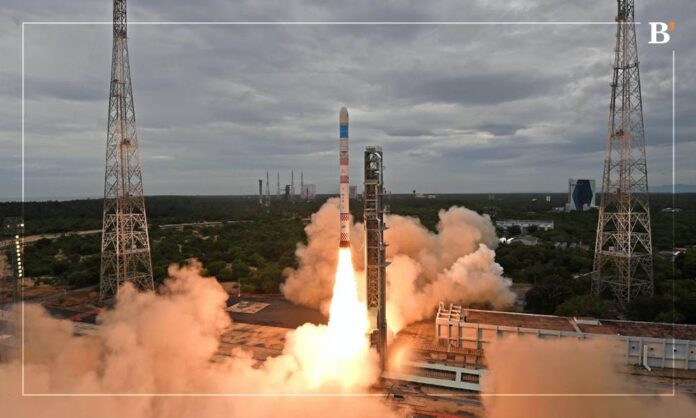Key Highlights
- The new Indian rocket, the Small Satellite Launch Vehicle (SSLV), deployed its two payloads in the wrong orbit. They are “no longer usable.”
- Both satellites were placed in an elliptical orbit instead of a circular orbit.
- ISRO will investigate the cause of the misplacement and other issues and try to resolve them for the next test launch.
This new Indian rocket launched for the first time on Saturday night, 6th Aug 2022, but failed to deliver its satellite payloads into their intended orbit because of a sensor issue.
The 112-foot-tall (34 meters) Small Satellite Launch Vehicle (SSLV) lifted off from Satish Dhawan Space Center on the southeastern coast of India on Saturday at 11:48 p.m. EDT (0348 GMT and 9:18 a.m. IST on Sunday, 7th Aug 2022) with two satellites onboard.
The three solid-fueled stages of the SSLV rocket performed well. But, in its fourth and final stage, a liquid-fueled “velocity trimming module” (VTM) hit a snag when ISRO officials reported a loss of data from the new Indian rocket. ISRO announced the mission had failed just after five hours of liftoff.
Pointers By ISRO Chairman
ISRO Chairman S.Somanath said in a video statement after the launch that the whole vehicle performance was outstanding initially, but it left the two satellites in the wrong orbit. Both the satellites were placed in an elliptical orbit in place of a circular orbit.”
The new Indian rocket left them in an orbit that ranged from 221 miles to as close as 47 miles (76 kilometers) instead of placing the satellites in a stable orbit of 221 miles (356 kilometers above Earth. That orbit was unstable, and the satellites had “already come down, and they are not usable,” Somanath said.
ISRO officials said on Twitter that a sensor failure not detected in time to switch to a “salvage action” caused the orbit issue. They planned to investigate the failure.
Somanath said they would identify the specific problem and the cause for the isolation and placement of satellites into an unacceptable orbit. Further, they will use the study to rectify issues for the next test flight of the SSLV rocket.
As per the ISRO officials, as its name indicates, the SSLV is designed to launch relatively small satellites. The rocket can lift upto 1,100 pounds (500 kg) to low Earth orbit (LEO).
For more such latest news in the space and universe category Click here




